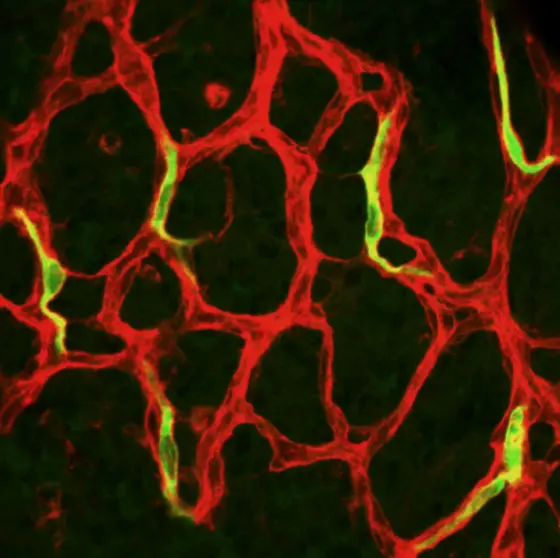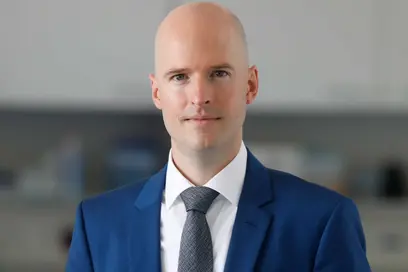The term “orphan receptor" is used for receptor proteins on the cell surface whose matching binding partner has not yet been identified. The binding partners, usually growth factors, activate the receptor, thus transmitting a biological signal into the cell interior. “Orphan receptors are like a key without a lock," says Hellmut Augustin, departmental head at the German Cancer Research Center (Deutsches Krebsforschungszentrum, DKFZ) and the Medical Faculty of Heidelberg University. “Nobody wants to work with them, because their function is so hard to determine."
Tie1 is one of these mysterious orphan receptors. It is known about Tie1 that it plays an important role in blood vessel development (angiogenesis). If Tie1 is selectively switched off in mice, their blood vessels stay immature and leaky. As a result, the animals die from edema, i.e. fluid leakages from the arteries and veins. In adult mice, Tie1 plays a major role in atherosclerosis and tumor growth.
“We spent a long time searching for a binding partner of Tie1 in order to understand how the receptor exerts its function on the vascular system," says Soniya Savant, the initial author of the current publication, which for the first time reveals substantial findings about the working mechanism of the Tie1 orphan receptor. “After years of unsuccessful searching, we considered the possibility that Tie1 might not have a binding partner."
Soniya Savant and her colleagues tested their hypothesis in a comprehensive series of cellular, biochemical and genetic experiments. On this basis, they finally developed a complex model of Tie1’s function: In growing blood vessels, Tie1 is expressed at high levels and suppresses the function of the related Tie2 receptor. Thus, the vascular wall cells are kept in an immature state and the sprouting of vessels is promoted. In maturing vessels, Tie1 is in balance with Tie2 and supports the Tie2-mediated signal transduction. In mature vessels, Tie1 is hardly expressed any more; their resting state is kept up by Tie2.
Hence, Tie1 regulates the function of another receptor without binding to a growth factor itself. “The dynamic regulation of Tie1 expression in various maturation stages of the vessels is the key to understanding this receptor," Augustin explains. “In this way, Tie1 can have a stimulating or inhibiting effect on Tie2, depending on the context."
The activation stage of vessels plays a crucial role in many diseases. Therefore, Tie2 and its binding partners, the angiopoietin growth factors, are already under intensive investigation in clinical research worldwide with the goal of using them in the treatment of tumors and eye diseases.
The finding that Tie1 is virtually not expressed in resting vessels while it is strongly expressed in pathologically activated ones now turns this orphan receptor into an interesting therapeutic target. Therefore, the researchers in the group of Hellmut Augustin are now trying to elucidate Tie1’s role in metastasis and to examine whether blocking Tie1 can prevent tumor spread.
Soniya Savant, Silvia La Porta, Annika Budnik, Katrin Busch, Junhao Hu, Nathalie Tisch, Claudia Korn, Aida Freire Valls, Andrew V. Benest, Dorothee Terhardt, Xianghu Qu, Ralf H. Adams, H. Scott Baldwin, Carmen Ruiz de Almodovar, Hans-Reimer Rodewald, and Hellmut G. Augustin: The orphan receptor Tie1 controls angiogenesis and vascular remodeling by differentially regulating Tie2 in tip and stalk cells. Cell Reports (2015) http://dx.doi.org/10.1016/j.celrep.2015.08.024



